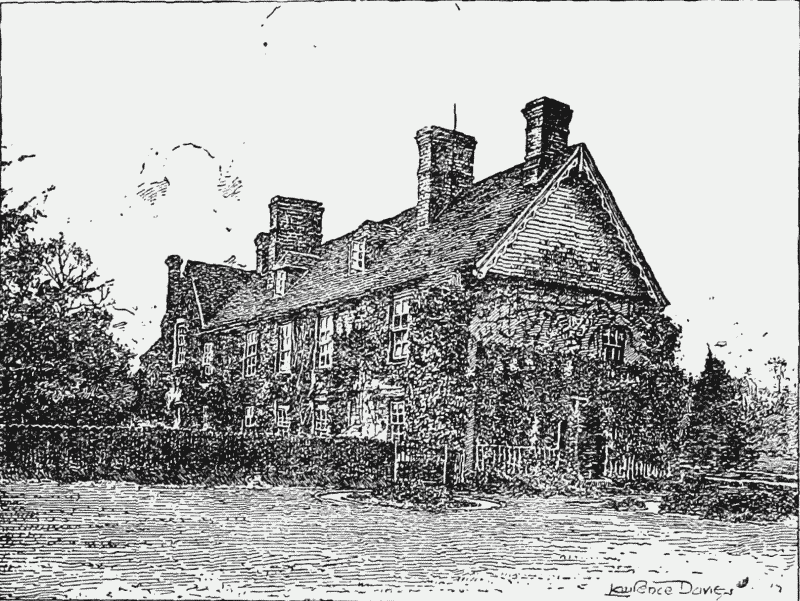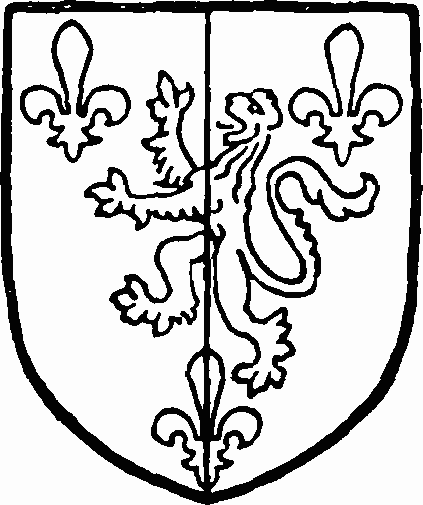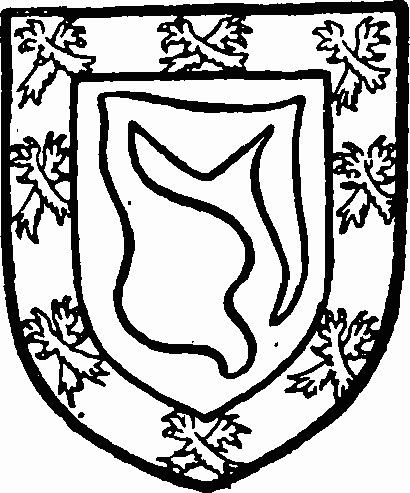A History of the County of Buckingham: Volume 4. Originally published by Victoria County History, London, 1927.
This free content was digitised by double rekeying. All rights reserved.
'Parishes : Upper Winchendon', in A History of the County of Buckingham: Volume 4, ed. William Page (London, 1927), British History Online https://prod.british-history.ac.uk/vch/bucks/vol4/pp122-125 [accessed 23 April 2025].
'Parishes : Upper Winchendon', in A History of the County of Buckingham: Volume 4. Edited by William Page (London, 1927), British History Online, accessed April 23, 2025, https://prod.british-history.ac.uk/vch/bucks/vol4/pp122-125.
"Parishes : Upper Winchendon". A History of the County of Buckingham: Volume 4. Ed. William Page (London, 1927), British History Online. Web. 23 April 2025. https://prod.british-history.ac.uk/vch/bucks/vol4/pp122-125.
In this section
UPPER WINCHENDON
Uvere Wincedona (xii cent.); Upwynchendon (xiii cent.); Over Winchendon (xiv cent.).
The area of this parish is 1,202 acres, of which 288 are arable land where wheat, barley, turnips, beans and mangold are grown, and 835 permanent grass. (fn. 1) The soil is of limestone and clay on a subsoil of Kimmeridge Clay and Portland Beds. The land stands generally 400 ft. above the ordnance datum, falling in some parts to 300 ft.
The village, which is small, is built on high ground with the church in a beautiful situation commanding fine views. On the brow of a hill south-east of the The Wilderness, Upper Winchendon, from the North church stood the ancient mansion of the Goodwins, (fn. 2) probably the messuage which John Goodwin allowed to fall into such decay that it was uninhabitable in 1517, (fn. 3) and which a memorandum of Thomas Cromwell described fourteen years later as 'a manor-place somewhat in ruins.' (fn. 4) After the Goodwins the Whartons made it their home. (fn. 5) Here Philip Lord Wharton, husband of Jane Goodwin, (fn. 6) had a collection of Vandykes and Lelys said to be the finest in England, (fn. 7) but scattered by the second Duke of Marlborough, who pulled down the greater part of the house. (fn. 8) The fragment of the house which now survives, called the Wilderness, is a two-storied building with attics dating from about 1650. A part of a moulded arch now in an outhouse dates from the 16th century, and is probably a portion of an arched fireplace. In the remaining spandrel is a leaf ornament and a shield of arms charged with a cheveron with a cock between three roundels thereon and a chief with a rose between two leopard's heads. The house retains an original staircase and some open ceilings.

The Wilderness, Upper Winchendon, from The North
In the early years of the 16th century some arable land in this parish was turned into pasture by John Goodwin, (fn. 9) and doubtless formed part of the 'goodly pasture containing by estimation 400 acres' which Cromwell noted in 1531. (fn. 10) A tract of arable land called Cokestyle belonged to the messuage during the tenancy of John Goodwin, (fn. 11) and he or his descendants must have made the inclosures known in the next century as the New Close, Water Mead, Bulls Water Mead, Stony Down, (fn. 12) le Combe, le Nashe, le Pitts Mead, le Nether ground with Clott Mead, le Moor Close, and Googesground. (fn. 13) Another inclosure of the same date, Mainesground, (fn. 14) perhaps the modern Mainshill, (fn. 15) recalls the connexion with Upper Winchendon of the family of Mayne in the neighbouring parish of Dinton. (fn. 16) Three years before his death in 1617, (fn. 17) Simon Mayne bought this with other land from Sir Francis Goodwin, (fn. 18) and his widow Coluberry (fn. 19) was engaged in a chancery suit against Sir Francis touching this property in 1623. (fn. 20) There was at this time a fishpond in Bulls Water Mead and the fishing of which Sir Francis retained a moiety in the sale to Simon (fn. 21) may have been here. The River Thame, however, touches the parish of Upper Winchendon in the south and has been one of its boundaries since the 11th century. (fn. 22)
The house of Samuel Clarke of 'Winchingdon,' licensed in 1672 for Presbyterian worship, must have stood in Upper or Lower Winchendon. (fn. 23)
Manor
The manor of UPPER WINCHENDON belonged to the priory of St. Frideswide before the Norman Conquest and was reckoned amongst the lands of the canons of Oxford in 1086. (fn. 24) It was held by the same house of the Crown in chief, (fn. 25) and in frankalmoign, (fn. 26) until its suppression in 1524, (fn. 27) and afterwards of the Crown in socage until 1645. (fn. 28)
Charters were granted by Henry I, John, and Henry III, to the Prior and Convent of St. Frideswide confirming their possessions here. (fn. 29) In 1518 a lease of manor, advowson and rectory for sixty years was granted to John Goodwin and Parnel Nashe, widow, (fn. 30) the former of whom had been the prior's tenant-at-will for a considerable amount of land in the parish for some years previously. (fn. 31) Upper Winchendon, which came to the Crown on the suppression of St. Frideswide, was granted to Cardinal Wolsey in 1525 (fn. 32) and settled by him in the next year on the college of his foundation at Oxford. (fn. 33) On Wolsey's fall the manor was once more in the king's hands. Though it was reckoned for some years amongst the possessions of Cardinal's College, (fn. 34) later the college of Henry VIII in Oxford, (fn. 35) it does not appear that it was actually reappropriated to that foundation, and in 1531 Cromwell was evidently appraising it for sale. (fn. 36) The next year John Williams (fn. 37) received a grant of the rent of £27 reserved by the prior on the lease of 1518 and of the reversion of the property included in that lease, (fn. 38) and another rent from the manor of Upper Winchendon and certain churches in the neighbourhood was bestowed on the Bishop of Lincoln a few weeks later. (fn. 39) Sir John Williams must have surrendered his rights here in or before 1546 when John Goodwin, the tenant of 1518, was granted the reversion of all that he held by lease in Upper Winchendon with the rent reserved. (fn. 40) He bought land here of Sir Edward Saunders in 1557 (fn. 41) and was lord of the manor at his death in the following year. (fn. 42)
By his son and heir, Sir John Goodwin, (fn. 43) who was sheriff in 1587, (fn. 44) it was settled about 1574 on the marriage of his son and heir of the same name with Anne, daughter of Sir Richard Baker. (fn. 45) The younger John died before his father, (fn. 46) and Upper Winchendon descended in or before 1597 to Sir John's younger son Francis. (fn. 47) A dispute which arose in that year with Elizabeth Goodwin, widow of Sir John, already re-married to Thomas Stukeley, (fn. 48) concerning the inheritance of Francis in Upper Winchendon and other parishes, seems to have been settled in 1600, Thomas and Elizabeth then relinquishing Elizabeth's claim on the manor to Francis, (fn. 49) who mortgaged it later in the same year. (fn. 50) Sir Francis Goodwin was knight of the shire in 1586 and 1597, (fn. 51) but though elected in 1604 the chancellor stated that he was an outlaw at the time and thereby disabled. (fn. 52) The House of Commons reversed the chancellor's decision, and although at the king's suggestion a new writ was issued, the result was really a victory for the Commons. (fn. 53) In 1614, 1621, 1625 and 1626 he was returned without opposition, (fn. 54) and was sheriff for the county in 1623. (fn. 55)

Goodwin. Party or and gules a lion between three fleurs de lis all countercoloured.
Sir Francis Goodwin settled the manor of Upper Winchendon on the marriage of his son and heir, Arthur, with Jane, daughter of Sir Richard Wenman, afterwards Viscount Wenman, in 1618, (fn. 56) and obtained five years later a grant from the king of the whole of his inheritance in this parish. (fn. 57) Arthur Goodwin, who succeeded his father in 1634, (fn. 58) had been member for Chipping Wycombe in 1621 and 1624, for Aylesbury in 1626, (fn. 59) and was returned as knight of the shire to the Long Parliament of 1640. (fn. 60) He died in 1643 leaving an only daughter and heir Jane, then wife of Philip Lord Wharton. (fn. 61) Lord Wharton, like his father-in-law a strong Puritan, and a commander in the Parliamentarian army, (fn. 62) and afterwards a member of Cromwell's House of Lords, (fn. 63) held Upper Winchendon (fn. 64) till his death in 1695–6, when he was succeeded by his third but eldest surviving son Thomas, (fn. 65) who had represented the county in Parliament many times since 1679. (fn. 66) From Thomas Wharton, created a marquess in February 1714–15, (fn. 67) the manor passed a few weeks later to his son, the brilliant and eccentric Philip Wharton, created Duke of Wharton in January 1717–18. (fn. 68) He held Upper Winchendon with his wife Martha when he attained his majority in 1719, (fn. 69) and mortgaged it to his creditors the same year. (fn. 70) Four years later, the greater part of his inheritance having been squandered, (fn. 71) a decree in Chancery ordered the sale of the manor of Upper Winchendon to the Duchess of Marlborough and other trustees of the late Duke of Marlborough, into whose possession it passed shortly afterwards. (fn. 72) Winchendon then descended with the title to John Winston, seventh Duke of Marlborough, who alienated it in 1874 to Baron Ferdinand de Rothschild. (fn. 73) His sister Miss Alice de Rothschild succeeded him in 1898, (fn. 74) and is now lady of the manor.

Wharton. Sable a sleeve argent and a border or charged with eight pairs of lions' legs razed gules and crossed saltirewise.

Churchill, Duke of Marlborough. Sable a lion argent and a quarter of St. George.
View of frankpledge belonged to the Prior of St. Frideswide in 1255 and remained appurtenant to the manor until the 17th century. (fn. 75) In 1286 tumbrel and gallows were also appurtenances. (fn. 76) There was a dovecote near the capital messuage in 1645. (fn. 77)
Church
The church of ST. MARY MAGDALENE consists of a chancel measuring internally 24 ft. by 14 ft. 6 in., nave 41 ft. by 16 ft. 6 in., north aisle 8 ft. 6 in. wide, west tower 11 ft. by 9 ft. and south porch; it is built of stone and roofed with tiles.
The earliest detail which can be dated with certainty is the mid-12th-century south doorway of the nave, but the plain north arcade suggests the addition of an aisle at an earlier period to an already existing nave. At the end of the 12th century the chancel was reconstructed, and in the middle of the 14th century the north aisle was apparently rebuilt and the south porch erected. The west tower was added about 1420. In modern times the church has been completely restored.
The chancel is light by three original lancets in each of the lateral walls and two in the east wall, all having round-headed rear arches. On the south are a blocked priest's doorway, a pointed sedile, and a roundheaded piscina, while below the south-west lancet are the remains of a low-side window; at the north-west corner is a squint connecting the chancel with the north aisle. There is a bracket on the east wall, and another on the south wall, indented for a beam; they are both probably original and retain traces of colour. The chancel arch, which is of late 12th-century date, though restored, is of a single order springing from plain responds with moulded abaci; over the arch is hung a funeral helm and crest.
The north arcade is of three bays, each having a round arch of one plain order springing from square jambs; in the absence of detail, the whole being covered with plaster, it is impossible to assign an exact date to this arcade. The mid-12th-century south doorway has a round head of two moulded orders springing from jamb shafts enriched with twisted and lozenge ornament and having scalloped capitals; a cross potent has been scratched on the east jamb. The holy-water stoup is placed on the nave wall inside. East of the doorway are two square-headed windows of about 1480, each of three cinquefoiled lights, and at the east end of the wall is a pointed recess, probably of original late 12th-century date, containing a small round-headed light. The upper doorway to the rood loft remains at the north-east of the nave. On the west is the pointed tower arch, which dates from about 1420, and is of three orders dying into plain responds.
The north aisle is lighted by two traceried windows in the north wall, each of two lights, a similar window on the west, and one of three lights on the east, all dating from the 14th century, though the east window appears to have been reset. The continuously-moulded north doorway is of the same period. The south porch, which is of timber on a stone base, has been very much restored.
The 15th-century tower is of two stages, and is surmounted by an embattled parapet, and supported by diagonal buttresses on the west. At the south-east is a stair turret which changes from a square to an octagonal plan at the commencement of the upper stage of the tower, and is crowned by a pyramidal stone roof. The continuously-moulded west doorway and two-light traceried window above are of the original date of the tower, as are also the windows of the bell-chamber, which are each of two trefoiled lights with tracery under a pointed head.
The font has a plain round bowl, dating probably from the 12th century, on a modern stem, and an early 17th-century cover constructed from a pulpit canopy. On the floor of the chancel is a brass figure of a priest in the habit of an Austin canon, and below is the inscription 'Syr John Stodeley and hys mother Emmot lyyn under thys marbyll stone have mynde of us forget us nat we pray to you frendys everychone that our soulis in blys may be say a pater noster wyth an ave huic ecclesie perpetuus prefuit iste vicarius a deo sit benedictus amen. anno domini xv°05.' At the north-east of the chancel is a mural monument with three beautifully drawn brass shields of Goodwin, Goodwin impaling Blondesden, and Goodwin and Blondesden impaling Bladlow; below is a verse commemorating John Goodwin, who died 11 May 1558, and Katherine his wife. They had eighteen children. There are three 17th-century floor slabs in the aisle. The pulpit, which has traceried panels and an embattled cornice, dates from the 14th century, and is cut from a single block of wood. Below the chance arch is a 15th-century traceried screen, and there are some 16th-century benches incorporated in the seating of the nave. The communion table and rails date from the 17th century, and in the north aisle there is a plain chest which probably dates from the 13th century.
The tower contains a ring of three bells, all inscribed 'Richard Chandler made me 1675,' and a small bell dated 1827.
The plate consists of a chalice and paten of 1689.
The registers begin in 1606.
Advowson
The church, which belonged to the priory of St. Frideswide in the 12th century (fn. 78) and probably from its foundation, (fn. 79) followed the descent of the manor (fn. 80) (q.v.), but was not alienated to Baron Ferdinand de Rothschild, the present Duke of Marlborough being now patron. (fn. 81) The vicarage was ordained by Bishop Hugh of Wells, and consisted of all the altar offerings, of the tithes of sheaves from half a hide which Robert son of Gervase held, and tithes of sheaves and hay from half a virgate which Walter Tresboen held together with a suitable house. (fn. 82)
Charity
This parish participates in the distribution of Bibles and religious books from Lord Wharton's general charity.